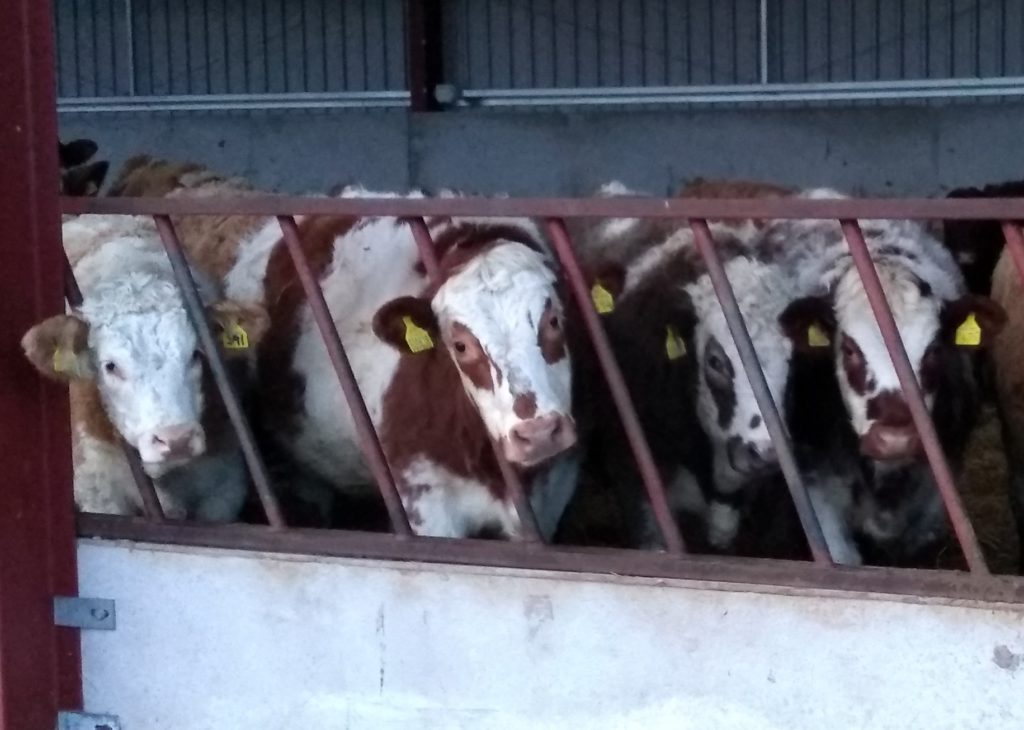Nutritional Causes: Focus On Laminitis
8 June 2020Nutritional management has been identified as a key component in the development of laminitis, particularly in rations with a high level of starch resulting in an acidotic state. Therefore, finishing cattle on a high cereal ration or cattle being transitioned onto a high cereal ration are particularly at risk of acidosis which can lead to lameness. The cause of laminitis due to high levels of starch in the diet is contributed to ruminal acidosis (a drop of pH in the rumen) which effects the bacteria which multiply in the rumen. The starch loving bacteria thrive, while the fibre loving bacteria die causing endotoxins and histamine to be released which effect the dilation of the blood vessels. This therefore makes animals more sensitive to risk factors such as physical traumas.
Main Areas Where Issues Lie
- Problem with the ration itself. For example, too much cereal or cereal is too finely-ground or ration is not mixed well.
- How the ration is fed. For example, running out of feed for a period of time causing gorging, poor access to fed by not enough space or bullying in the pen
- Not enough forage or clean straw available. Lack of long fibre reduces the buffering in the rumen. When cattle chew long forage they produce vast amounts of saliva which neutralises the acids in the rumen and keeps it at a healthy pH.
Within the above categories there will be a spectrum of cases from mildly affected to very acute cases. An issue with the ration will likely be a group issue whereas how the ration is fed may only affect a few individual animals. If there are a few cattle look to have laminitis in a group it could also be the tip of the iceberg – the rest are likely to be suffering Sub-acute Ruminal Acidosis (SARA) where there are no obvious signs of lameness but their rumen will not be functioning as well and thus not converting their feed as well. The management of the ration is the main factor in cases but there are other factors that may predispose animals to be affected such as housing and bedding type or genetics.
The key to managing laminitis due to nutrition is to ensure good feeding and management practices to deal with the primary issue: ruminal acidosis.
Top Tips For Reducing Acidosis Risk On An Ad-Lib Concentrate Ration:
- During the transition period allow for a minimum of 2 weeks to build up to ad lib intake of concentrates.
- Start with a diet with higher protein (16-17% protein as fed) to help with adaptation by the rumen microbes.
- Start with feeding concentrates twice daily at 2kg a feed, then introduce a third feed and gradually increase quantities until some feed is left.
- Once the troughs are full make sure they are kept full, if they are emptied you risk cattle gorging themselves at the next filling.
- When moving on to an intensive starchy ration, think about the source of long fibre – offer straw in a ring feeder throughout the transition period.
- If the straw is to be mixed in the ration rather than offered in a ring feeder ensure that the straw is chopped to a suitable length (more than 2cm but less than 10cm) and that feed is kept palatable and moist to avoid sorting (adding molasses to the blend is a useful option).
- Avoid over processing cereals – a crack in the grain is all that is required.
- Feed access is extremely important during the transition period. Ensure all stock can get to the trough at one time and only once established on to ad lib then introduce hoppers.
- Carefully position the feed hopper to allow good access and provide a quick exit so cattle are not nervous about going to feed.
Balance Of The Ration
The addition of 10-15% fresh weight of digestible fibre into the ration such as sugar beet pulp or soya hulls may seem expensive, but this will support rumen function and health and help prevent acid overload. Animals’ showing clinical signs of acidosis are usually an indication that the rest of the group could be suffering from sub clinical acidosis. This will significantly reduce their performance. Although they might not necessarily show it, solutions must be for the whole group not just the individual animal. The use of additives such as buffers and rumen efficiency enhancers should only be used if the base ration is correct – such additives cannot rectify more fundamental problems. In summary, aim for a well-balanced base ration and ensure a sensible transition onto starchy rations.
Karen Stewart, karen.stewart@sac.co.uk
This article is part of a series, you may also be interested in Practical Steps To Reducing Lameness In Finishing Cattle and Identifying and Treating Lameness In Cattle
Sign up to the FAS newsletter
Receive updates on news, events and publications from Scotland’s Farm Advisory Service

